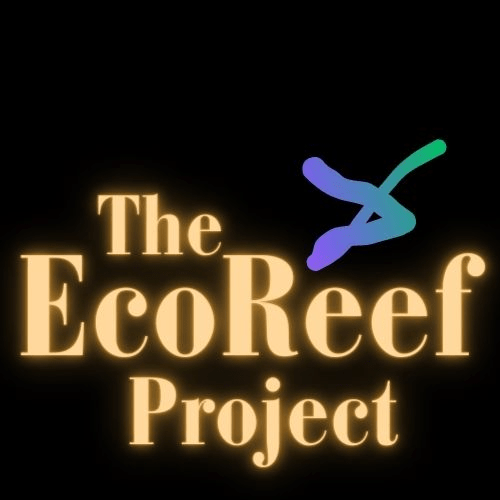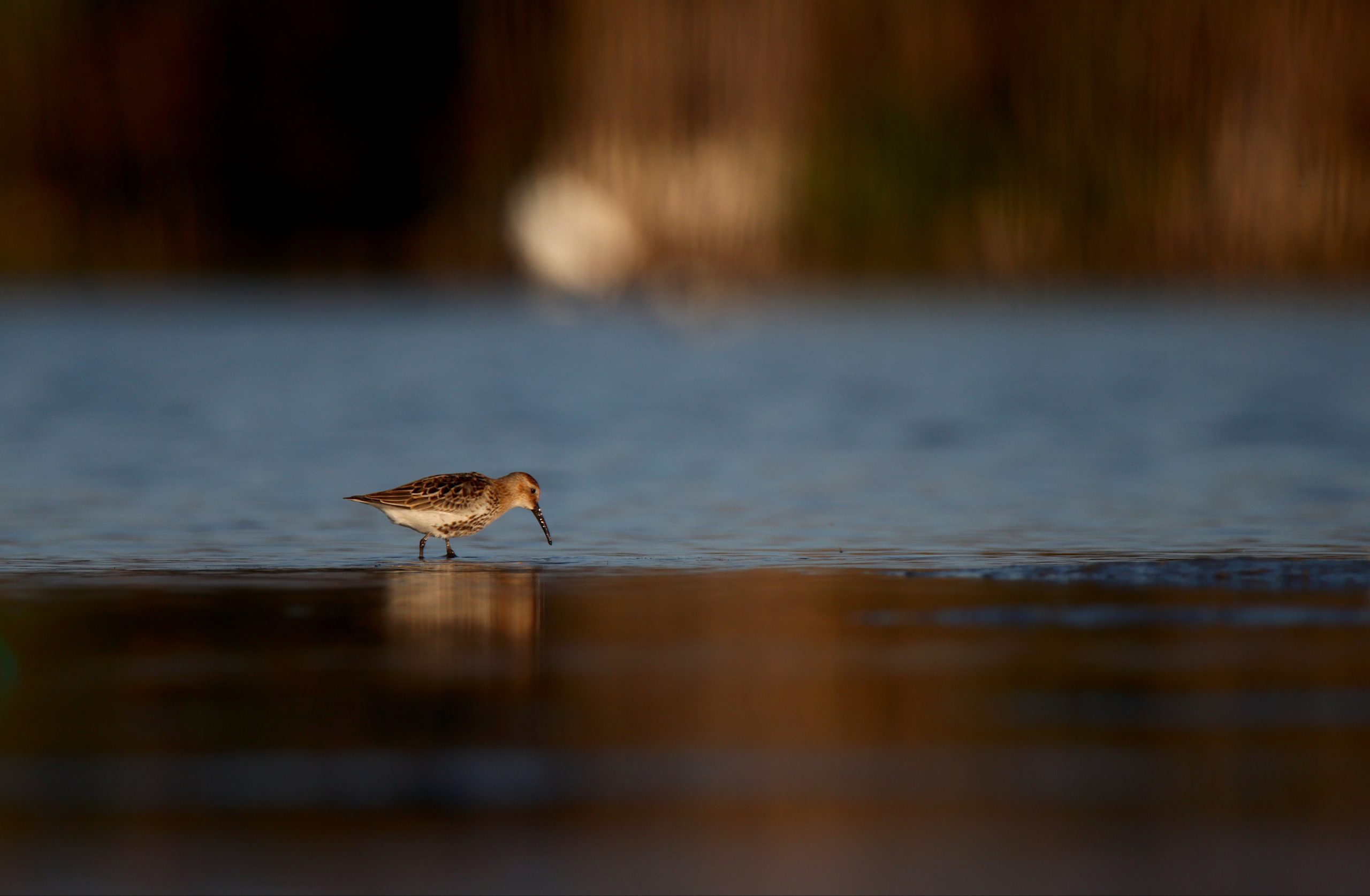Interlinked EcoReefs By The EcoReef Project
Modular Mesh Design For Coastal Stability
EcoReefs can be interlinked into modular mesh formations that stabilize coastlines. These structures absorb wave energy and reduce sediment displacement. By forming continuous barriers, they prevent shoreline collapse during storms. The mesh design allows water to flow through while slowing its force. Interlinked EcoReefs act as flexible buffers against tidal surges. Their porous surfaces trap sand and organic matter. This promotes natural dune formation behind the reef line. The mesh layout adapts to shifting coastal contours. EcoReefs thus become dynamic stabilizers rather than rigid walls. Their integration ensures long-term shoreline resilience.
| Feature | Function | Benefit |
|---|---|---|
| Mesh Formation | Interlinked units | Flexible protection |
| Wave Absorption | Reduces energy | Prevents erosion |
| Sediment Trapping | Holds sand | Builds dunes |
| Flow Permeability | Allows water movement | Avoids stagnation |
| Adaptive Layout | Matches contours | Enhances resilience |
Adaptable Erosion Control And Flood Resilience
EcoReefs As Flood Surge Dissipators
When meshed together, EcoReefs dissipate the energy of incoming flood surges. Their structure breaks wave momentum across multiple layers. This reduces inland water intrusion during extreme weather. Interlinked EcoReefs By The EcoReef Project slow the advance of stormwater, protecting low-lying areas. Their placement in estuaries and river mouths buffers urban zones. The interlinked design distributes pressure evenly across the reef field. Floodwaters lose velocity before reaching vulnerable infrastructure. EcoReefs also redirect flow into safer channels. Their role is not to block water but to reshape its impact. This approach aligns with nature-based flood mitigation strategies.
- Breaks wave momentum
- Reduces inland intrusion
- Slows stormwater advance
- Buffers urban zones
- Distributes pressure evenly
- Redirects flow safely
- Avoids rigid barriers
- Aligns with nature-based solutions
- Protects low-lying areas
- Reshapes flood impact
Interlinked EcoReefs And Sediment Management
EcoReefs mesh together to manage sediment transport in dynamic waterways. Their porous surfaces trap suspended particles. This reduces turbidity and improves water clarity. Interlinked reefs stabilize riverbanks and estuarine margins. Sediment retention supports aquatic vegetation growth. EcoReefs prevent scouring during high flow events. Their layout encourages gradual deposition in targeted zones. This builds natural levees and underwater terraces. Sediment management enhances habitat complexity. EcoReefs thus restore geomorphological balance in stressed systems.
| Sediment Role | Mechanism | Outcome |
|---|---|---|
| Particle Trapping | Porous surfaces | Clearer water |
| Bank Stabilization | Mesh layout | Reduced erosion |
| Vegetation Support | Retained sediment | Root anchoring |
| Deposition Control | Flow redirection | Builds terraces |
| Geomorphology Restoration | Balanced transport | Habitat resilience |
EcoReefs And Root Zone Protection
Meshed EcoReefs shield root zones of aquatic plants from erosion. Their structure reduces current velocity near the seabed. This prevents uprooting of seagrass and mangrove seedlings. EcoReefs trap organic debris that nourishes root systems. The interlinked design creates calm microhabitats for plant establishment. Root protection enhances carbon sequestration and water filtration. EcoReefs also support fungal and microbial communities in sediment. These organisms improve nutrient cycling around plant roots. The mesh layout ensures coverage across vulnerable zones. EcoReefs thus safeguard foundational species in aquatic ecosystems.
- Reduces current velocity
- Prevents plant uprooting
- Traps organic debris
- Creates calm microhabitats
- Enhances carbon sequestration
- Supports microbial communities
- Improves nutrient cycling
- Ensures root zone coverage
- Strengthens plant resilience
- Protects foundational species
EcoReefs And Habitat Connectivity
Interlinked EcoReefs form corridors that connect fragmented habitats. Their continuous layout allows species to migrate safely. Fish and invertebrates use reef meshes as stepping stones. Connectivity supports genetic exchange and population recovery. Eco Reefs bridge gaps between mangroves, seagrass beds, and coral zones. This integration strengthens ecosystem-wide resilience. Habitat corridors also reduce isolation stress in marine species. EcoReefs adapt to tidal rhythms, maintaining accessibility. Their role extends beyond shelter to ecological linkage. Interlinked reefs become lifelines across aquatic landscapes.
| Connectivity Role | Function | Benefit |
|---|---|---|
| Migration Pathways | Linked structures | Safe movement |
| Genetic Exchange | Species interaction | Population health |
| Ecosystem Bridging | Connects habitats | Strengthens networks |
| Isolation Reduction | Continuous access | Reduces stress |
| Tidal Adaptation | Dynamic layout | Maintains linkage |
EcoReefs And Vegetation Buffering
EcoReefs protect shoreline vegetation from wave damage. Their interlinked design reduces impact on reeds, mangroves, and grasses. Vegetation buffers benefit from calmer water behind reef lines. This promotes root anchoring and leaf expansion. EcoReefs trap sediment that nourishes plant beds. Their placement enhances light penetration for photosynthesis. Vegetation growth stabilizes soil and reduces runoff. EcoReefs and plants form a feedback loop of resilience. Together, they create multi-layered coastal defenses. EcoReefs thus amplify the protective role of aquatic vegetation.
- Reduces wave impact
- Protects shoreline plants
- Promotes root anchoring
- Enhances leaf expansion
- Traps nourishing sediment
- Improves light penetration
- Stabilizes soil
- Reduces runoff
- Creates feedback loop
- Amplifies vegetation resilience
EcoReefs And Animal Refuge Networks
Meshed EcoReefs provide refuge for aquatic animals during floods. Their cavities offer shelter from strong currents. Fish, crabs, and mollusks use reef meshes as safe zones. Refuge networks reduce mortality during extreme events. EcoReefs also support breeding and spawning in calm pockets. Their interlinked layout ensures coverage across flood-prone areas. Refuge availability enhances species recovery post-disaster. EcoReefs mimic natural crevices and root tangles. Their design supports both mobile and sedentary organisms. Interlinked reefs become emergency shelters for aquatic life.
| Refuge Role | Feature | Impact |
|---|---|---|
| Shelter Cavities | Calm zones | Reduces mortality |
| Breeding Support | Stable pockets | Enhances reproduction |
| Flood Coverage | Wide layout | Increases survival |
| Habitat Mimicry | Natural forms | Supports diversity |
| Recovery Aid | Post-event refuge | Speeds regeneration |
EcoReefs And Flow Redistribution
EcoReefs mesh together to redistribute water flow in vulnerable zones. Their structure channels currents away from erosion hotspots. Flow redirection reduces pressure on riverbanks and coastal edges. EcoReefs create turbulence that slows water velocity. This prevents scouring and sediment loss. Redistribution also protects infrastructure near waterways. EcoReefs adapt to seasonal flow changes. Their layout can be modified to match hydrological patterns. Flow management enhances both ecological and urban resilience. EcoReefs become tools for dynamic water control.
- Channels currents safely
- Reduces pressure on banks
- Slows water velocity
- Prevents sediment loss
- Protects nearby infrastructure
- Adapts to seasonal changes
- Matches hydrological patterns
- Enhances urban resilience
- Supports ecological balance
- Enables dynamic water control

EcoReefs And Stormwater Filtration
Interlinked EcoReefs filter stormwater runoff before it reaches sensitive habitats. Their porous surfaces trap debris and contaminants. Filtration improves water quality in estuaries and lagoons. EcoReefs reduce nutrient overloads that cause algal blooms. Their structure supports microbial breakdown of pollutants. Filtration zones can be targeted near urban outflows. EcoReefs act as biological sieves during heavy rainfall. Their mesh layout ensures wide coverage and redundancy. Stormwater filtration protects aquatic life and vegetation. EcoReefs integrate pollution control into flood resilience.
| Filtration Role | Mechanism | Benefit |
|---|---|---|
| Debris Trapping | Porous surfaces | Cleaner water |
| Nutrient Control | Microbial action | Prevents blooms |
| Targeted Placement | Near outflows | Maximizes impact |
| Redundancy | Interlinked units | Ensures coverage |
| Pollution Integration | Dual function | Protects ecosystems |
EcoReefs And Intertidal Zone Stabilization
Meshed EcoReefs reinforce intertidal zones where erosion is most severe. These areas face constant exposure to wave action and tidal shifts. EcoReefs buffer the transition between land and sea. Their porous design traps sediment and organic matter during low tide. This supports the growth of salt-tolerant vegetation. During high tide, EcoReefs reduce water velocity, preventing root damage. Their interlinked layout ensures coverage across tidal gradients. Stabilization enhances habitat for crabs, mollusks, and juvenile fish. EcoReefs adapt to daily tidal rhythms without obstructing flow. Their presence restores balance in vulnerable intertidal ecosystems.
| Zone | Challenge | EcoReef Function |
|---|---|---|
| Intertidal | Constant erosion | Buffers wave energy |
| Low Tide | Sediment loss | Traps organic matter |
| High Tide | Root damage | Reduces velocity |
| Gradient Coverage | Habitat fragmentation | Ensures continuity |
| Ecological Impact | Species decline | Restores balance |
EcoReefs And Mangrove Fringe Reinforcement
EcoReefs can be meshed along mangrove fringes to reinforce root networks. Mangroves are critical for flood absorption and carbon storage. Their roots are vulnerable to scouring and sediment loss. EcoReefs reduce wave energy before it reaches the mangrove line. This protects young saplings and stabilizes mature trees. The mesh design allows tidal exchange without uprooting vegetation. EcoReefs also trap nutrients that support mangrove growth. Their placement enhances the natural filtration capacity of mangrove systems. Interlinked reefs and mangroves form dual-layered flood defenses. EcoReefs thus amplify the ecological services of coastal forests.
- Reinforce mangrove root networks
- Reduce wave energy at fringes
- Protect saplings from scouring
- Stabilize mature trees
- Allow tidal exchange
- Trap growth-supporting nutrients
- Enhance filtration capacity
- Form dual-layered flood defenses
- Amplify ecological services
- Support coastal forest resilience
EcoReefs And Estuarine Flow Modulation
In estuaries, meshed EcoReefs modulate flow between freshwater and marine systems. Their structure slows salinity intrusion during floods. This protects freshwater species and vegetation. EcoReefs also reduce nutrient surges that disrupt estuarine balance. Their porous surfaces support microbial communities that buffer chemical changes. Flow modulation enhances breeding conditions for fish and crustaceans. EcoReefs adapt to seasonal variations in estuarine discharge. Their interlinked layout ensures consistent performance across tidal zones. Estuarine health depends on controlled mixing and sediment retention. EcoReefs become regulators of ecological equilibrium.
| Estuarine Function | EcoReef Role | Benefit |
|---|---|---|
| Salinity Control | Slows intrusion | Protects freshwater life |
| Nutrient Buffering | Reduces surges | Maintains balance |
| Microbial Support | Enhances breakdown | Stabilizes chemistry |
| Seasonal Adaptation | Matches discharge | Ensures resilience |
| Equilibrium Regulation | Modulates flow | Sustains ecosystems |
EcoReefs And Coral Nursery Integration
EcoReefs can be meshed with coral nurseries to support reef regeneration. Their structure provides stable platforms for coral fragments. Calm water zones created by EcoReefs enhance coral settlement. The mesh layout protects young corals from sediment smothering. EcoReefs also reduce thermal stress by moderating flow. Their porous surfaces support algae and microbial symbionts. Coral nurseries benefit from reduced predation and physical damage. EcoReefs act as scaffolds for reef expansion. Integration accelerates reef recovery in degraded zones. EcoReefs thus become partners in coral restoration.
- Provide stable platforms for coral fragments
- Create calm zones for settlement
- Prevent sediment smothering
- Moderate thermal stress
- Support symbiotic organisms
- Reduce predation and damage
- Act as scaffolds for expansion
- Accelerate reef recovery
- Integrate with restoration efforts
- Partner in coral regeneration
EcoReefs And Wetland Edge Fortification
EcoReefs reinforce the edges of wetlands vulnerable to erosion. Their interlinked design buffers wave energy and tidal surges. Wetland soils are soft and easily displaced. EcoReefs trap sediment and organic matter, building natural levees. This supports marsh grasses and aquatic shrubs. Fortification enhances water filtration and carbon storage. EcoReefs also reduce nutrient runoff into wetland basins. Their placement ensures coverage across fluctuating water levels. Wetland edge stability improves habitat for birds and amphibians. EcoReefs protect the ecological integrity of transitional zones.
| Wetland Feature | Threat | EcoReef Function |
|---|---|---|
| Soft Soil | Erosion | Traps sediment |
| Vegetation | Uprooting | Buffers wave energy |
| Water Quality | Runoff | Filters nutrients |
| Carbon Storage | Loss | Supports plant growth |
| Habitat | Fragmentation | Stabilizes edges |
EcoReefs And Agricultural Runoff Buffering
EcoReefs can be meshed near agricultural outflows to buffer nutrient runoff. Their porous surfaces trap excess nitrogen and phosphorus. This prevents eutrophication in downstream aquatic systems. EcoReefs support microbial communities that break down pollutants. Buffering zones reduce algal blooms and oxygen depletion. Placement near irrigation channels enhances water quality before discharge. EcoReefs also protect aquatic vegetation from chemical stress. Their interlinked layout ensures wide coverage and redundancy. Agricultural runoff buffering aligns with watershed management goals. EcoReefs integrate pollution control into landscape-scale resilience.
- Trap nitrogen and phosphorus
- Prevent eutrophication
- Support pollutant breakdown
- Reduce algal blooms
- Enhance water quality
- Protect aquatic vegetation
- Ensure coverage and redundancy
- Align with watershed goals
- Integrate pollution control
- Strengthen landscape resilience

EcoReefs And Urban Flood Interface Design
EcoReefs can be meshed into urban waterfronts to manage flood interfaces. Their structure absorbs surge energy before it reaches infrastructure. EcoReefs reduce pressure on seawalls and drainage systems. Their porous design allows controlled overflow into retention zones. This prevents flash flooding in built environments. EcoReefs also trap debris carried by stormwater. Their placement enhances the performance of green infrastructure. Interlinked reefs adapt to changing urban hydrology. EcoReefs become part of hybrid flood mitigation systems. Their role bridges ecological and engineered resilience.
| Urban Feature | Challenge | EcoReef Benefit |
|---|---|---|
| Waterfronts | Surge impact | Absorbs energy |
| Drainage | Overload | Controls overflow |
| Infrastructure | Flash flooding | Reduces pressure |
| Debris | Stormwater transport | Traps contaminants |
| Hybrid Systems | Integration | Enhances resilience |
EcoReefs And Riparian Zone Stabilization
EcoReefs stabilize riparian zones along rivers and streams. Their interlinked design reduces bank erosion during high flow events. Riparian vegetation benefits from sediment retention and root protection. EcoReefs trap organic matter that nourishes plant beds. Their placement enhances biodiversity in transitional freshwater zones. Stabilization supports amphibians, insects, and small mammals. EcoReefs also reduce nutrient runoff into river systems. Their porous structure filters contaminants before they spread downstream. Riparian health depends on edge stability and water quality. EcoReefs reinforce both through dynamic mesh integration.
- Reduce bank erosion
- Protect riparian vegetation
- Trap nourishing organic matter
- Enhance biodiversity
- Support transitional species
- Filter nutrient runoff
- Improve water quality
- Reinforce edge stability
- Integrate dynamically with flow
- Strengthen riparian resilience
EcoReefs And Dynamic Coastal Zoning
EcoReefs enable dynamic zoning of coastal protection strategies. Their modular design allows flexible placement across risk zones. EcoReefs can be concentrated in erosion hotspots or flood-prone areas. Their interlinked layout adapts to shifting shoreline contours. Zoning ensures efficient use of materials and labor. EcoReefs support targeted ecological restoration alongside hazard mitigation. Dynamic zoning allows seasonal adjustments and long-term planning. EcoReefs become tools for adaptive coastal management. Their role extends beyond structure to strategic deployment. Zoning transforms EcoReefs into responsive infrastructure.
| Zoning Strategy | Feature | Benefit |
|---|---|---|
| Modular Design | Flexible placement | Matches risk zones |
| Contour Adaptation | Interlinked layout | Enhances coverage |
| Seasonal Adjustment | Dynamic deployment | Improves performance |
| Restoration Integration | Ecological targeting | Dual benefit |
| Strategic Planning | Responsive infrastructure | Long-term resilience |
EcoReefs And Multi-Species Habitat Engineering
EcoReefs support multi-species habitat engineering through their interlinked structure. Different modules cater to varied ecological niches. Small cavities shelter juvenile fish and invertebrates. Larger openings support crustaceans and benthic feeders. Surface textures encourage algae and coral colonization. EcoReefs create vertical and horizontal complexity in aquatic landscapes. Their mesh layout allows layering of habitats across depths. Multi-species engineering enhances biodiversity and food web stability. EcoReefs become scaffolds for ecological architecture. Their design supports coexistence and ecological synergy.
- Support varied ecological niches
- Shelter juvenile and adult species
- Encourage colonization by algae and coral
- Create vertical and horizontal complexity
- Layer habitats across depths
- Enhance biodiversity
- Stabilize food webs
- Act as ecological scaffolds
- Enable coexistence
- Foster ecological synergy














Leave a Reply